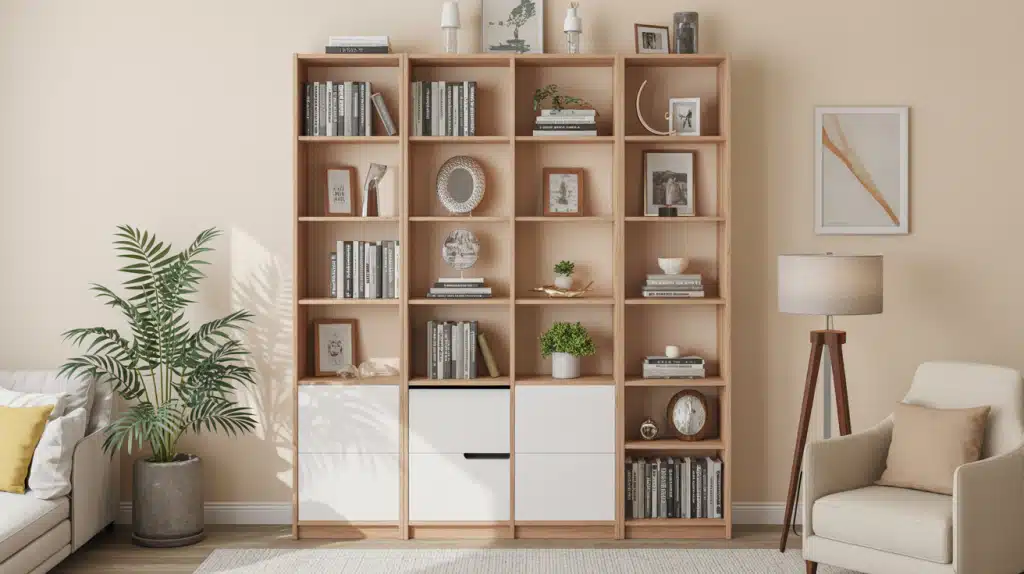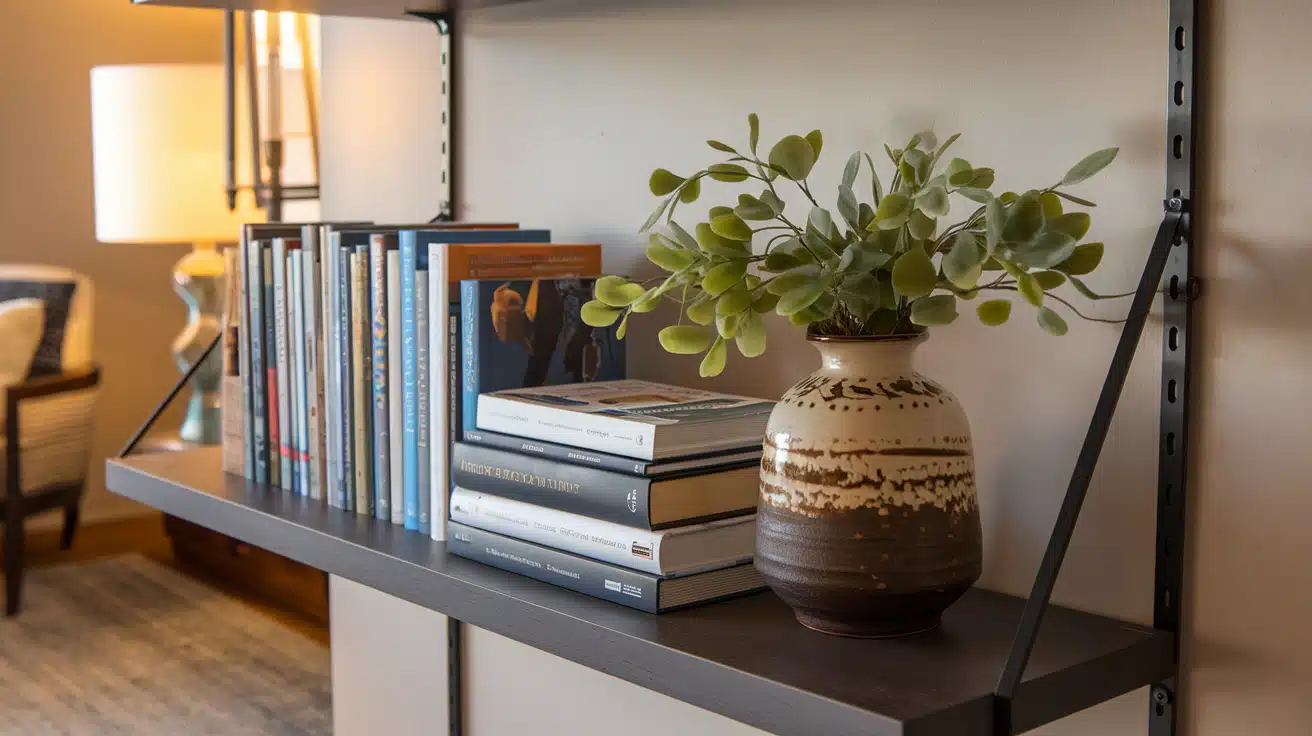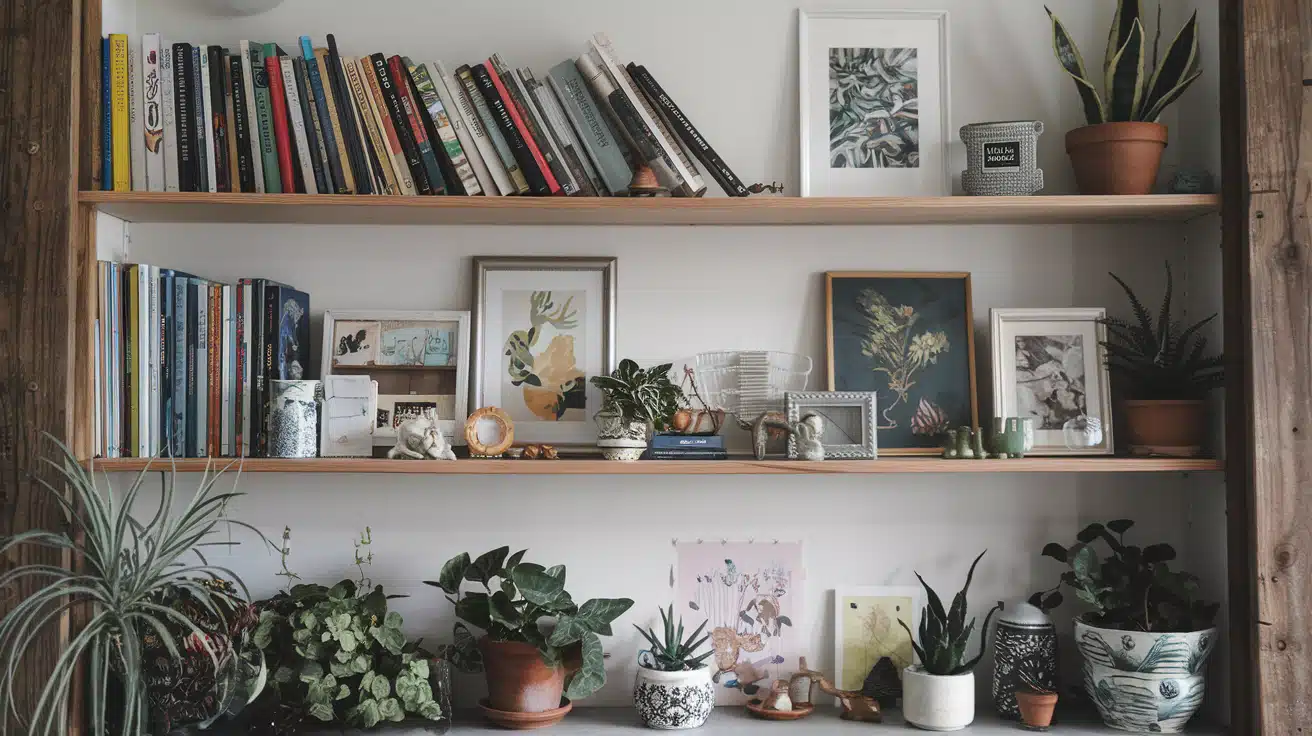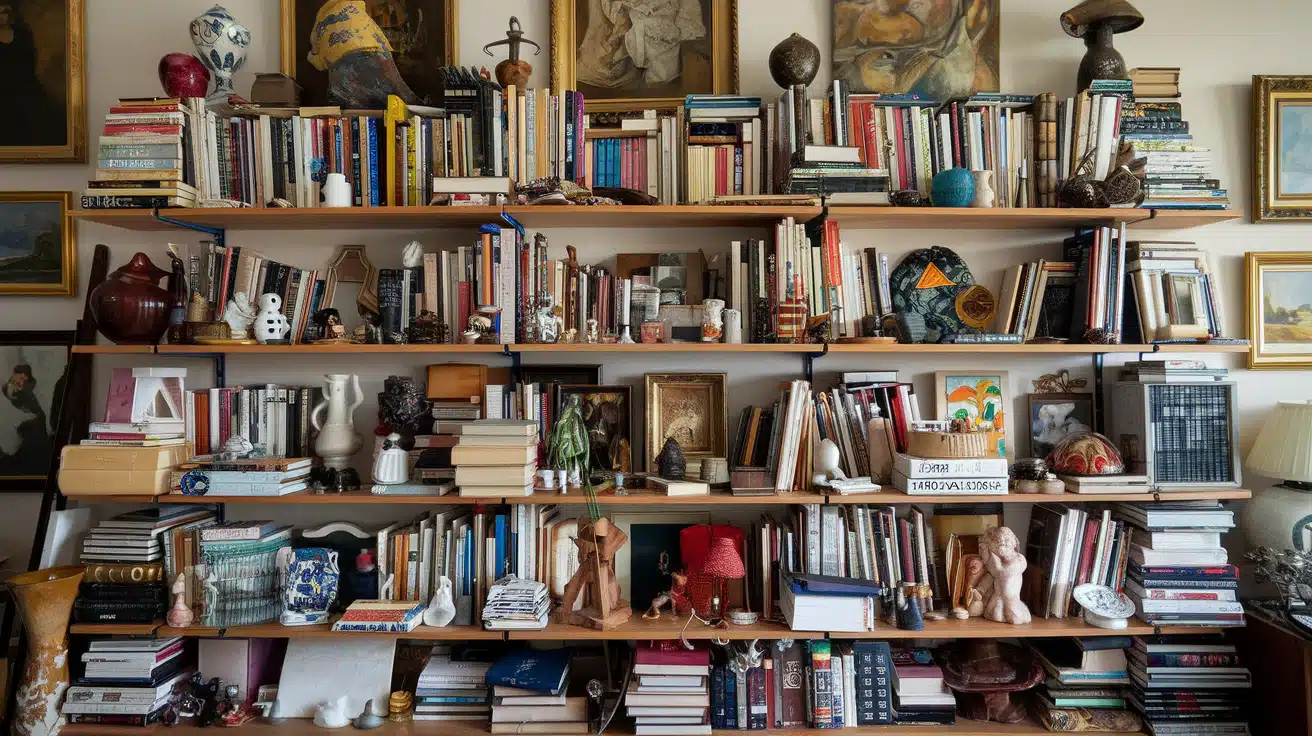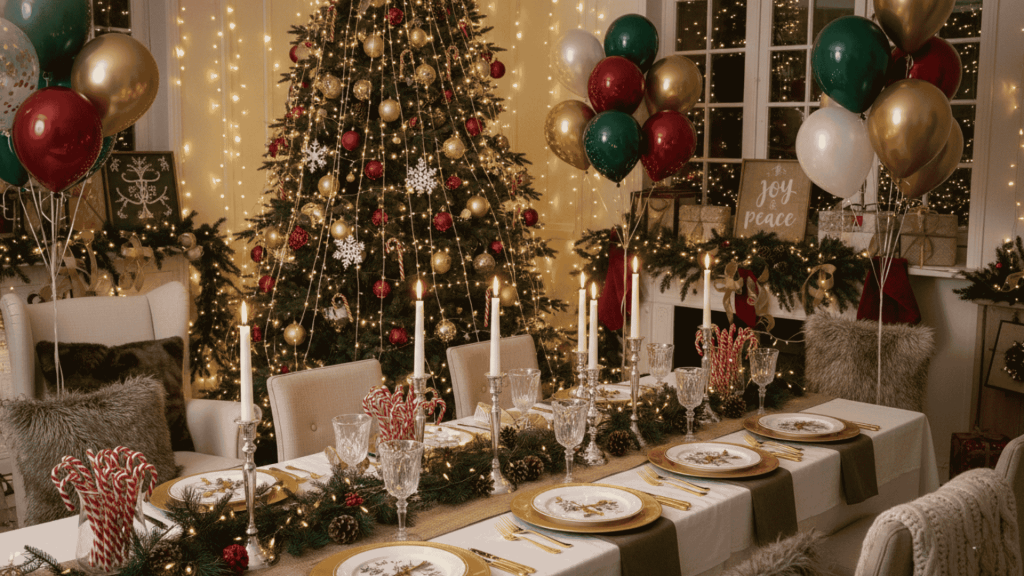Ever stared at your empty bookshelf, wondering where to start? You’re not alone.
Many homeowners struggle with making their shelves look curated rather than cluttered.
The good news is that learning how to style a bookshelf doesn’t require professional design skills.
With the right approach, you can transform any bookshelf into a focal point that reflects your personality while staying organized and functional.
This guide will walk you through proven techniques that work whether you have five books or five hundred.
Start with a Clean Slate: Foundation of Good Bookshelf Style
The most successful shelf styling begins with removing everything from your shelves. This step offers a fresh perspective, helping you make intentional choices about what to keep and what to discard.
Clear your shelves completely and gather potential items from around your home. Look for books, decorative objects, plants, picture frames, and meaningful keepsakes.
Having everything visible makes it easier to select pieces that work well together.
Consider the backdrop of your bookshelf, too. A painted interior can make your items pop. Light backgrounds work well with darker objects, while dark painted backs create stunning contrast with lighter pieces.
The Rule of Three: Creating Visual Harmony
Professional designers swear by the rule of three when styling shelves. Group items in odd numbers, particularly threes, as this creates more visual interest than even groupings.
Apply this rule by creating three distinct sections on each shelf or grouping three items of varying heights together. For example, stack three books horizontally, then place a small plant and a decorative bowl nearby.
Mix different textures within your groups. Combine smooth ceramics with rough woven baskets or glossy picture frames with matte wooden objects. This variation keeps your shelves from looking monotonous.
Master the Art of Book Arrangement
Books form the backbone of any well-styled bookshelf, but how you arrange them makes all the difference. Avoid placing all books vertically in neat rows, as this can appear boring and repetitive.
Mix vertical and horizontal stacking. Place some books upright and stack others horizontally. Horizontal stacks work particularly well with larger coffee table books, creating natural platforms for displaying smaller objects.
Vary book heights on each shelf instead of grouping books by size. This creates visual movement and prevents your shelves from looking too uniform.
Pull books to the front edge of shelves rather than pushing them back. This technique makes spines catch the light, giving your bookshelf a polished, professional appearance.
For book lovers with extensive collections, organize by color or subject matter. Group similar spine colors together for a cohesive look, or separate fiction from non-fiction to make finding books easier.
Balance Large and Small Elements
Each shelf needs anchor pieces – larger items that ground the design and provide visual weight. These might include substantial books, decorative boxes, or medium-sized vases.
Start with your largest items first. Place these anchor pieces on different shelves to create balance throughout the entire bookcase. Avoid placing all large items on one shelf, as this can make the bookcase look top-heavy or bottom-heavy.
After placing anchor pieces, fill in with smaller decorative objects. This might include small plants, candles, picture frames, or collectibles.
Leave breathing room between items. Overcrowded shelves look cluttered and prevent individual pieces from standing out. Aim to use about 70% of your shelf space, leaving 30% empty for visual rest.
Color Coordination Strategies
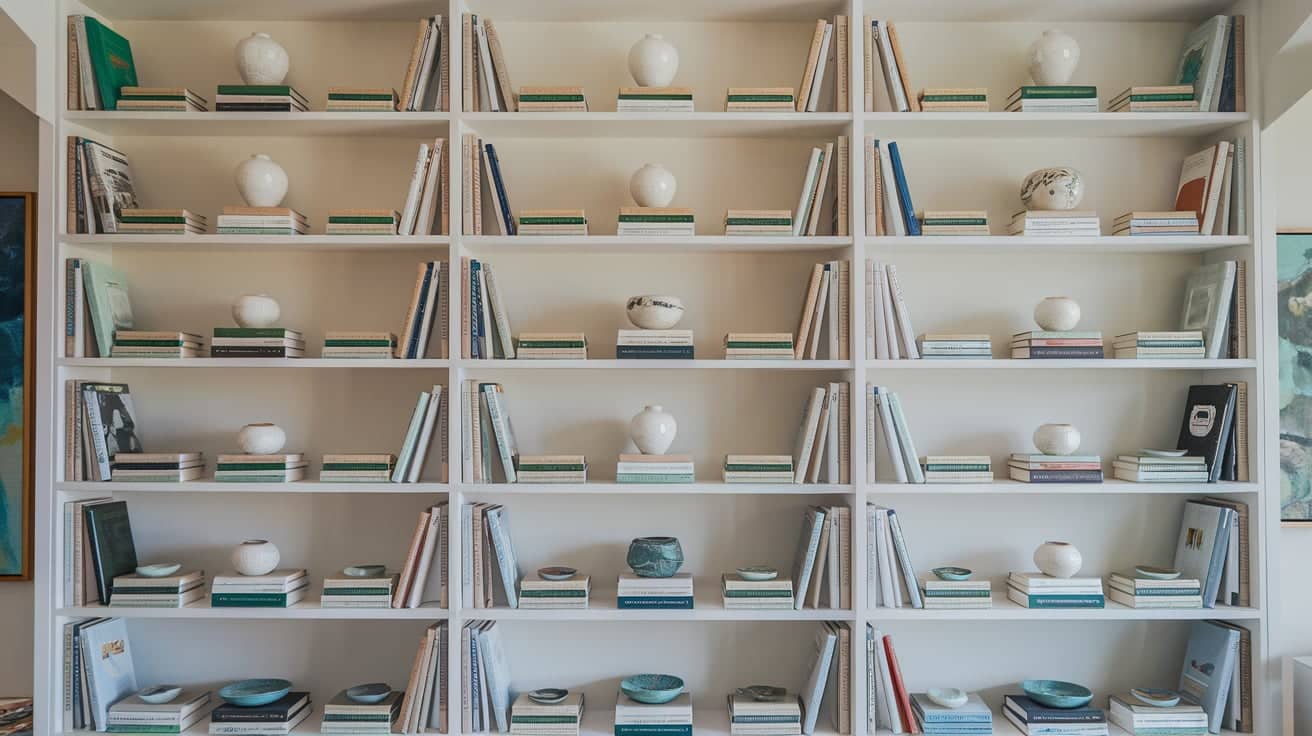
Color coordination can make or break your bookshelf styling. Too many competing colors create visual chaos, while a thoughtful color scheme brings harmony to your display.
Choose a maximum of three main colors for your entire bookshelf. This might be white, natural wood, with one accent color, such as blue or green. Stick to this palette when selecting both books and decorative objects.
Group similar colored books together rather than scattering them randomly. This creates blocks of color that are pleasing to the eye and help calm the appearance of busy-looking shelves.
If your books don’t fit your color scheme, try removing dust jackets to reveal the actual book covers underneath, which are often more neutral in tone. Alternatively, face some books backward to show neutral spine backs.
Add Personality with Meaningful Objects
The objects you choose should tell your story and reflect your interests. Mix personal items with purely decorative pieces to create shelves that feel uniquely yours.
Include travel souvenirs, family photos, and inherited pieces that have special meaning. These personal touches prevent your shelves from looking like a furniture store display.
Vary object shapes and sizes. Round vases balance out rectangular books, while tall candlesticks add height variation. Avoid using too many items of similar shapes, as this can create a repetitive look.
Consider functional decorative items like attractive storage boxes, vintage bookends, or stylish desk accessories. These pieces serve a dual purpose by providing both form and function.
Create Depth and Visual Interest
Flat arrangements where everything sits at the shelf’s front edge look static and boring. Create depth by varying the distance at which you place different items.
Layer items at different depths. Place some objects toward the front of the shelves and others toward the back. This creates visual depth and makes your shelves more interesting to explore.
Lean artwork against the back of the shelves with other objects in front. Small framed prints or even book covers can serve as backdrop art, adding color and personality.
Use books as risers by stacking them horizontally and placing objects on top. This technique creates different height levels and maximizes your display space.
Work with Your Space and Lighting
Different rooms call for different styling approaches. Consider where your bookshelf is located and how it’s used when making styling decisions.
Living room shelves can handle more decorative pieces since they’re primarily for display. Include family photos, travel mementos, and conversation-starting objects.
Office or study shelves should balance style with function. Keep frequently referenced books easily accessible while using attractive storage solutions for supplies.
Kitchen shelving works best when styled with functional items that double as decor – beautiful dishes, cookbooks, and attractive storage containers.
Consider your shelf’s lighting too. Shelves near windows can support plants that need natural light, while darker corners might benefit from reflective objects or light-colored items.
Common Styling Mistakes to Avoid
Even with good intentions, certain mistakes can undermine your bookshelf styling efforts. Being aware of these pitfalls helps you create more visually appealing shelves.
Don’t overcrowd your shelves: It’s tempting to fill every inch of space, but negative space is just as important as the objects you display. Crowded shelves look cluttered and prevent individual items from standing out.
Avoid placing items of identical height next to each other: This creates a monotonous line that lacks visual interest. Instead, vary heights to create a more organic, collected-over-time appearance.
Don’t ignore the entire bookcase: Step back regularly to assess how all shelves work together rather than focusing on individual shelves in isolation.
Skip the matchy-matchy approach: While color coordination is important, having everything too perfectly matched can look sterile and impersonal.
Seasonal Refresh and Maintenance Tips
Your bookshelf styling doesn’t have to remain static throughout the year. Small seasonal changes keep your display fresh and interesting.
Swap out small decorative objects with the seasons. Add miniature pumpkins in fall, evergreen sprigs in winter, or fresh flowers in spring. These small touches keep your shelves feeling current.
Rotate books and objects periodically to prevent your display from becoming stale. Store some items and bring out others to give your shelves a refreshed look without buying anything new.
Dust your display regularly to keep it looking its best. Use microfiber cloths on books and select cleaners for different material types.
Reassess your arrangement every few months. As you acquire new books or objects, you may need to edit your display to maintain balance and prevent overcrowding.
Conclusion
Learning how to style a bookshelf successfully comes down to balancing function with beauty while letting your personality shine through.
Start with a clean slate, apply the rule of three, and mix books with meaningful objects in a coordinated color scheme.
Remember to create depth, leave breathing room, and step back regularly to assess your overall composition.
With practice, you’ll develop an eye for creating shelves that are both functional and beautiful. What story will your bookshelves tell?

